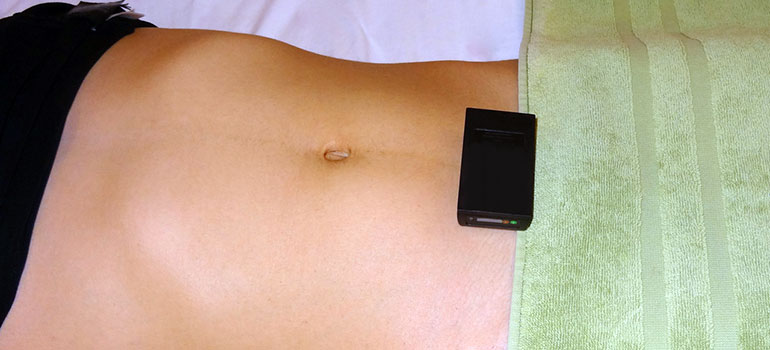A wireless, credit-card sized optical device developed by members of the UBC Faculty of Medicine shows promise for diagnosing lower urinary tract infections (UTIs), especially in children, the elderly and people with neurological conditions.
Babak Shadgan and his colleagues were able to diagnose UTI in 12 pediatric patients using the device, which sends near-infrared beams of light to measure tissue oxygenation in the bladder wall. The device was invented by Andrew Macnab, a Professor in the Department of Pediatrics, and Lynn Stothers, a Professor in the Department of Urologic Sciences.
By comparing these results with measurements from patients’ thigh as a control site, researchers were able to determine when infections were present. The research was recently outlined in the Journal of Pediatric Urology.
“When the measurement over the bladder is significantly higher than the measurement on the control site, it may indicate the bladder is inflamed,” said Dr. Shadgan, a postdoctoral fellow in the Department of Urologic Sciences.
The procedure is very different from the standard method of diagnosis, which involves collecting urine and testing it for the presence of bacteria — a costly procedure that can take up to 72 hours for definitive results, and that is not always practical in young children or patients with spinal cord injury.
UTIs, while common across all age groups, can cause serious complications if left untreated, including kidney damage and sepsis. UTIs are the most common bacterial infection in children under two years of age. Delayed treatment of a UTI may lead to renal (kidney) scarring.
“The hallmark sign of a urinary tract infection in adults is painful urination,” said Dr. Shadgan, who is part of ICORD (International Collaboration on Repair Discoveries) of UBC and Vancouver Coastal Health. “People with spinal cord injury, and children may not present with the typical symptoms of UTI. One of the leading causes of reduced quality of life among persons with spinal cord injury is urinary tract infection, and in some cases it can result in serious infections and renal failure.”
Larger clinical trials are required to investigate the accuracy and sensitivity of the method. Dr. Shadgan is currently testing the method to screen for UTIs in people with spinal cord injury in a study lead by Mark Nigro, a Clinical Professor in the Department of Urologic Sciences, at the Brenda and David McLean Integrated Spine Clinic at the Blusson Spinal Cord Centre. The research team hopes to one day equip at-risk patients with handheld devices for daily self-screening.
This work was funded in part by the Rick Hansen Institute, the UBC Urology Foundation, the Michael Smith Foundation for Health Researchers, and supported by ICORD.
